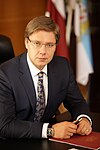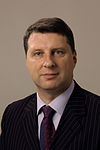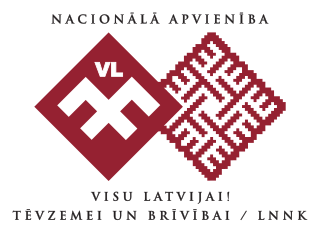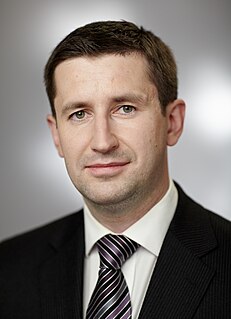| ||||||||||||||||||||||||||||||||||||||||||||||||||||||||||||||||||||||||||||||||||
All 100 seats in the Saeima 51 seats needed for a majority | ||||||||||||||||||||||||||||||||||||||||||||||||||||||||||||||||||||||||||||||||||
|---|---|---|---|---|---|---|---|---|---|---|---|---|---|---|---|---|---|---|---|---|---|---|---|---|---|---|---|---|---|---|---|---|---|---|---|---|---|---|---|---|---|---|---|---|---|---|---|---|---|---|---|---|---|---|---|---|---|---|---|---|---|---|---|---|---|---|---|---|---|---|---|---|---|---|---|---|---|---|---|---|---|---|
| ||||||||||||||||||||||||||||||||||||||||||||||||||||||||||||||||||||||||||||||||||
| ||||||||||||||||||||||||||||||||||||||||||||||||||||||||||||||||||||||||||||||||||
An early parliamentary election was held in Latvia on 17 September 2011, [1] following the country's first parliamentary dissolution referendum held on 23 July 2011. The previous parliamentary election was only held in October 2010.

Latvia, officially the Republic of Latvia, is a country in the Baltic region of Northern Europe. Since its independence, Latvia has been referred to as one of the Baltic states. It is bordered by Estonia to the north, Lithuania to the south, Russia to the east, and Belarus to the southeast, and shares a maritime border with Sweden to the west. Latvia has 1,957,200 inhabitants and a territory of 64,589 km2 (24,938 sq mi). The country has a temperate seasonal climate.
Contents
The election resulted in Harmony Centre winning the most seats, up two to 31. This was the first time a pro-Russian party had won the most seats in a Latvian election. Unity, previously the largest party, fell to third, with 20 seats, behind the newly formed Zatlers' Reform Party, led by ex-President Valdis Zatlers, who had triggered the dissolution referendum in May. The right-wing National Alliance gained six seats to 14. Both the Union of Greens and Farmers and Latvia's First Party/Latvian Way lost heavily, with the latter falling out of the Saeima altogether.

Harmony Centre was a social-democratic political alliance in Latvia. It originally consisted of five political parties: the National Harmony Party, the Socialist Party of Latvia, New Centre, the Daugavpils City Party, and the Social Democratic Party. Through a series of mergers they were eventually reduced to two: Social Democratic Party "Harmony" and the Socialist Party.

The President of Latvia, is head of state and commander-in-chief of the National Armed Forces of the Republic of Latvia.

Valdis Zatlers is a Latvian politician and former physician who served as the seventh president of Latvia from 2007 to 2011. He won the Latvian presidential election of 31 May 2007. He became President of Latvia on 8 July 2007 and left office on 7 July 2011 after failing to win reelection for a second term.
Zatlers and incumbent Prime Minister Valdis Dombrovskis soon agreed to form a coalition. Needing nine further seats to give them a majority allowed three possible coalitions – with Harmony Centre, the National Alliance, or the Union of Greens and Farmers. The Greens and Farmers were quickly ruled out by Zatlers, who judged it to be an "oligarch's party". After initial talks with the National Alliance, the two briefly discussed a grand coalition with Harmony Centre. However, Zatlers and Unity returned to the National Alliance, and the three signed a coalition agreement on 11 October, with Dombrovskis as Prime Minister. The new government was confirmed by the Saeima on 25 October. A few days before the government formation, six MPs split from Zatlers' Reform Party; they still supported the new government, however. [2]

The Prime Minister of Latvia is the most powerful member of the Government of Latvia, and presides over the Latvian Cabinet of Ministers. The Prime Minister is nominated by the President of Latvia, but must be able to obtain the support of a majority of the Saeima (parliament).

Valdis Dombrovskis is a Latvian politician and the current European Commission Vice-President for the Euro and Social Dialogue, serving since November 2014. He served as Prime Minister of Latvia from 2009 until 2014, when he resigned. He served as Minister of Finance from 2002 to 2004 and was a Member of the European Parliament for the New Era Party. Following the resignation of Jonathan Hill, it was announced that Dombrovskis will take over the portfolio for Financial Stability, Financial Services and the Capital Markets Union from 16 July 2016. He delivers keynote speeches at events.
The term business oligarch is almost a synonym of the term business magnate, borrowed by the English-speaking and western media from post-Soviet parlance to label those businessmen who quickly acquired huge wealth in post-Soviet states during the privatization in Russia and in other post-Soviet states in the 1990s. Post-Soviet oligarchs are magnates who control sufficient resources to influence national politics. A business group might be defined as an oligarch if it satisfies the following conditions:
- owners are the largest private owners in the country
- it possesses sufficient political power to promote its own interests
- owners control multiple businesses, which intensively coordinate their activities.



















